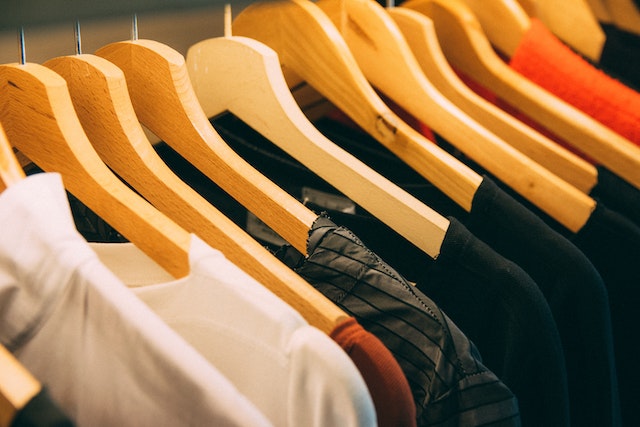Embracing a Greener Future
Welcome to the era of sustainable fashion, where style meets consciousness. The clothing industry is undergoing a transformative journey toward a greener and more ethical future in a world of environmental challenges. As consumers become increasingly aware of fast fashion’s environmental and social impacts, the demand for sustainable clothing has skyrocketed.
In this blog post, we’ll explore the evolution of sustainable fashion and how it is reshaping the entire clothing industry. From eco-friendly materials and ethical practices to the rise of slow fashion and circularity, we’ll uncover the key aspects of this sustainable revolution.
1. The Need for Sustainable Fashion: Why Change is Crucial
A Fashion Faux Pas: The Dark Side of Fast Fashion
Fast fashion, with its rapid production and disposal of garments, has left a detrimental mark on our planet. Landfills overflow with discarded clothing, while toxic chemicals pollute waterways. The fashion industry is responsible for a significant portion of global greenhouse gas emissions, and exploitative labor practices have tainted its reputation. But change is on the horizon.
Embracing Conscious Consumerism
As consumers, we hold immense power to drive change. The rising demand for ethical and sustainable clothing has compelled the industry to redefine its practices. People seek alternatives to the throwaway culture, favoring garments that align with their values. By choosing sustainable fashion, we can contribute to a healthier planet and support the fair treatment of workers.
2. Sustainable Materials and Manufacturing: A Greener Foundation
Fabrics of the Future
Innovative materials have emerged as game-changers in sustainable fashion. Organic cotton, made without harmful pesticides, promotes biodiversity and protects farmers’ health. Recycled polyester from plastic bottles reduces waste and lowers carbon emissions. Hemp, a versatile and eco-friendly fiber, requires minimal water and no pesticides. These fabrics are paving the way for a greener industry.
Fashion with a Conscience: Manufacturing Techniques
Eco-friendly manufacturing techniques are revolutionizing the clothing industry. Zero-waste production minimizes fabric waste during the design process, while waterless dyeing reduces water consumption and eliminates toxic chemicals. By adopting these techniques, brands are taking responsibility for their environmental impact.
3. Ethical Fashion: A Fair Trade Revolution
Unveiling the Truth: Ethical Labor Practices
The clothing industry has grappled with exploitative labor practices for far too long. But ethical fashion is rewriting this narrative. Fairtrade initiatives ensure that workers receive fair wages and safe working conditions. Transparency and traceability in the supply chain empower consumers to make informed choices, supporting brands that prioritize the well-being of their workers.
Putting a Face to Ethical Fashion
Let’s meet Emma, a garment worker whose life changed when she became part of a fair trade cooperative. She now enjoys a life of dignity and financial stability through fair wages and improved working conditions. Emma’s story represents the transformative power of ethical fashion and highlights the importance of supporting brands that value human rights.
4. Slow Fashion and Capsule Wardrobes: Embracing Quality Over Quantity
Slow Fashion: Timeless Style Meets Sustainability
In a world of fast-paced trends, slow fashion encourages us to slow down and appreciate quality over quantity. Investing in durable and timeless pieces reduces our environmental footprint and promotes sustainable consumption. Slow fashion is about curating a wardrobe transcending fleeting trends, embracing garments that stand the test of time.
The Capsule Wardrobe: Less is More
Imagine opening your closet and finding a curated collection of versatile garments that effortlessly mix and match. That’s the essence of a capsule wardrobe. By building a collection of essential pieces that can be styled in countless ways, we reduce waste, simplify our lives, and cultivate a personal style that reflects our values. It’s a minimalist approach to fashion with maximum impact.
5. Circular Fashion and Upcycling: Closing the Loop
The Circular Revolution: Reducing Waste
Circular fashion aims to break the linear “take-make-dispose” model. Instead, it embraces a circular economy, where resources are used for as long as possible. Recycling and upcycling play pivotal roles in this revolution. Garments made from recycled materials help reduce the demand for virgin resources, while upcycling breathes new life into old clothes, transforming them into unique creations.
From Trash to Treasure: A Sustainable Success Story
Meet Sarah, a passionate upcycler who turns discarded denim into fashionable tote bags. By rescuing jeans destined for the landfill, she showcases the creative possibilities of upcycling. Sarah’s story highlights the beauty and potential hidden within “waste,” inspiring others to view their old garments as opportunities for reinvention.
6. Sustainable Fashion on the Runway: Style Meets Sustainability
The Green Catwalk: Ethical Fashion in the Spotlight
Sustainable fashion is no longer a niche market; it’s taking center stage on the runway. Leading fashion weeks showcase designers committed to ethical and sustainable practices. From stunning couture made from upcycled fabrics to garments crafted by artisans using traditional techniques, sustainable fashion has become a beacon of creativity and responsibility.
Championing Sustainable Style: Influential Designers and Brands
Stella McCartney, Eileen Fisher, and Patagonia are just a few of the trailblazing designers and brands leading the sustainable fashion movement. By prioritizing eco-friendly materials, fair labor, and transparency, these industry leaders inspire others and prove that style and sustainability can coexist harmoniously.
7. Consumer Tips for Sustainable Fashion: Making a Difference
Fashion Revolution Starts with You
Curious about how you can contribute to the sustainable fashion movement? Start by becoming a conscious consumer. Look for certifications like Fair Trade, GOTS, or Oeko-Tex to ensure your clothes meet ethical and environmental standards. Support local artisans and second-hand stores. Extend the lifespan of your garments through proper care and repairs. Small choices can create a ripple effect for positive change.
Take the Challenge: A Sustainable Fashion Diary
Embark on a month-long sustainable fashion challenge, documenting your experiences and insights. Share your journey on social media, inspiring others to join the movement. You become an agent of change and contribute to a more sustainable future by raising awareness and initiating conversations.
Conclusion: Fashion Forward, Earth Friendly
The fashion industry is undergoing a profound transformation, with sustainability at its core. From the use of eco-friendly materials to ethical labor practices, slow fashion, circularity, and the rising presence of sustainable fashion on the runway, every aspect of the clothing industry is being reimagined. As consumers, we have the power to shape this new reality.
By embracing sustainable fashion, we can redefine how we dress, make conscious choices that protect our planet, and uphold the rights of those who make our clothes. Together, we can create a fashion-forward world that is both stylish and earth-friendly.
FAQs
1. What is the difference between sustainable fashion and fast fashion?
Sustainable fashion minimizes clothing production’s environmental and social impact, prioritizing ethical practices and eco-friendly materials. On the other hand, fast fashion emphasizes quick and cheap production, often resulting in negative consequences for the environment and workers.
2. Is sustainable fashion more expensive?
While some sustainable fashion brands may have higher prices due to using quality materials and fair labor practices, affordable, sustainable options are available. Additionally, investing in well-made garments that last longer can be more cost-effective in the long run.
3. How can I find sustainable fashion brands?
Look for certifications such as Fair Trade, GOTS (Global Organic Textile Standard), or Oeko-Tex, which indicate that the brand meets specific sustainability criteria. Research online directories and platforms that curate sustainable fashion brands and explore local boutiques and second-hand stores.
4. Can I make a difference by practicing sustainable fashion as an individual?
Absolutely! Every small step counts. By making conscious choices in your clothing purchases, extending the lifespan of your garments, and supporting ethical brands, you contribute to a more sustainable fashion industry and inspire others to follow suit.
5. What is the future of sustainable fashion?
The future of sustainable fashion looks promising. With technological advancements, innovative materials, and increased consumer demand, sustainable fashion will likely become more accessible and mainstream. We can expect to see further integration of sustainability into fashion design, manufacturing, and consumer habits, leading to a more circular and responsible industry.






GIPHY App Key not set. Please check settings